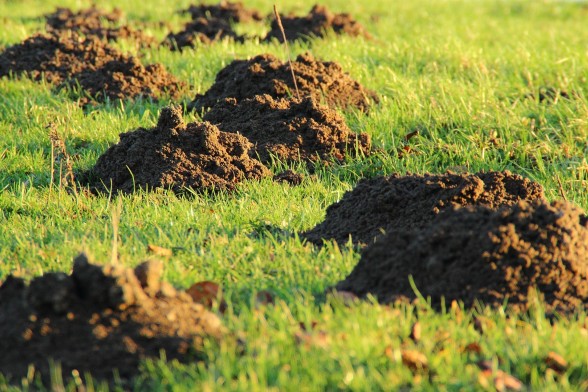
European mole
Diet
The mole is a distinct carnivore, with earthworms being its staple food. In good habitats, they make up to 90% of the food eaten, but they also eat insects, their larvae, centipedes, molluscs, and in exceptional cases amphibians, mice and shrews. They can eat 50 grams of food a day, and even up to 70 grams in autumn. It cannot starve for long, so it builds up food reserves (moles can live 15-17 hours without food). The mole searches for food by scanning its underground passages, where different invertebrates congregate. The mole's saliva is toxic, paralysing earthworms by biting off their anterior parts.
Habitat
It inhabits a variety of natural and cultivated habitats, preferring areas with soft, rolling ground and rough terrain. Often can be found in deciduous and mixed forests, groves and clearings. They like to settle in cultivated areas: meadows, pastures, field margins, orchards, also in green areas, parks. The main factor in site selection is the abundance of earthworms. Rarely found on arable land where deep ploughing is practised. Hardly found in waterlogged areas and areas with very acid or dry soil, avoiding sandy, rocky areas and large monoculture fields.
Important and interesting facts
The mole is a typical digger, with a body specially adapted to the life underground. In the narrow underground tunnels, the fur has to withstand a lot of stress and wear, so the coat is changed 3-4 times a year.
Vision is low (the animal can only detect changes in the brightness of light).
The mole spends its entire life in a multi-storey tunnel system that it has dug itself, which is constantly being expanded. In a single day, the mole digs up to 20 metres.
Mole pups are born in a "nursery", which is usually built under the roots of a stump, tree or bush, relatively deep (1-2 m) underground and lined with dry grass and leaves. The most significant natural enemies of the mole are all animals of the Mustelidae family (badgers, for instance), predators, hedgehogs, foxes, which bite moles, but usually do not eat, and large birds such as white storks, crows, falcons, hawks and owls.
The mole’s underground labyrinths consist of interconnected passages and midways dug at different depths. They can be 2 metres or a few centimetres deep. Every now and then, a mole pushes up everything it has left behind, causing eruptions of black earth. These excavations are called molehills. In agricultural areas, the mole is usually considered a pest, although by creating burrow labyrinths, moles plough up the soil and promote the circulation of air and moisture. In addition, the presence of moles reduces the spread of voles in gardens, so that they can be considered as useful animals for garden defence.
Information sources: latvijasdaba.lv, Wikipedia
Photo: pixabay.com
